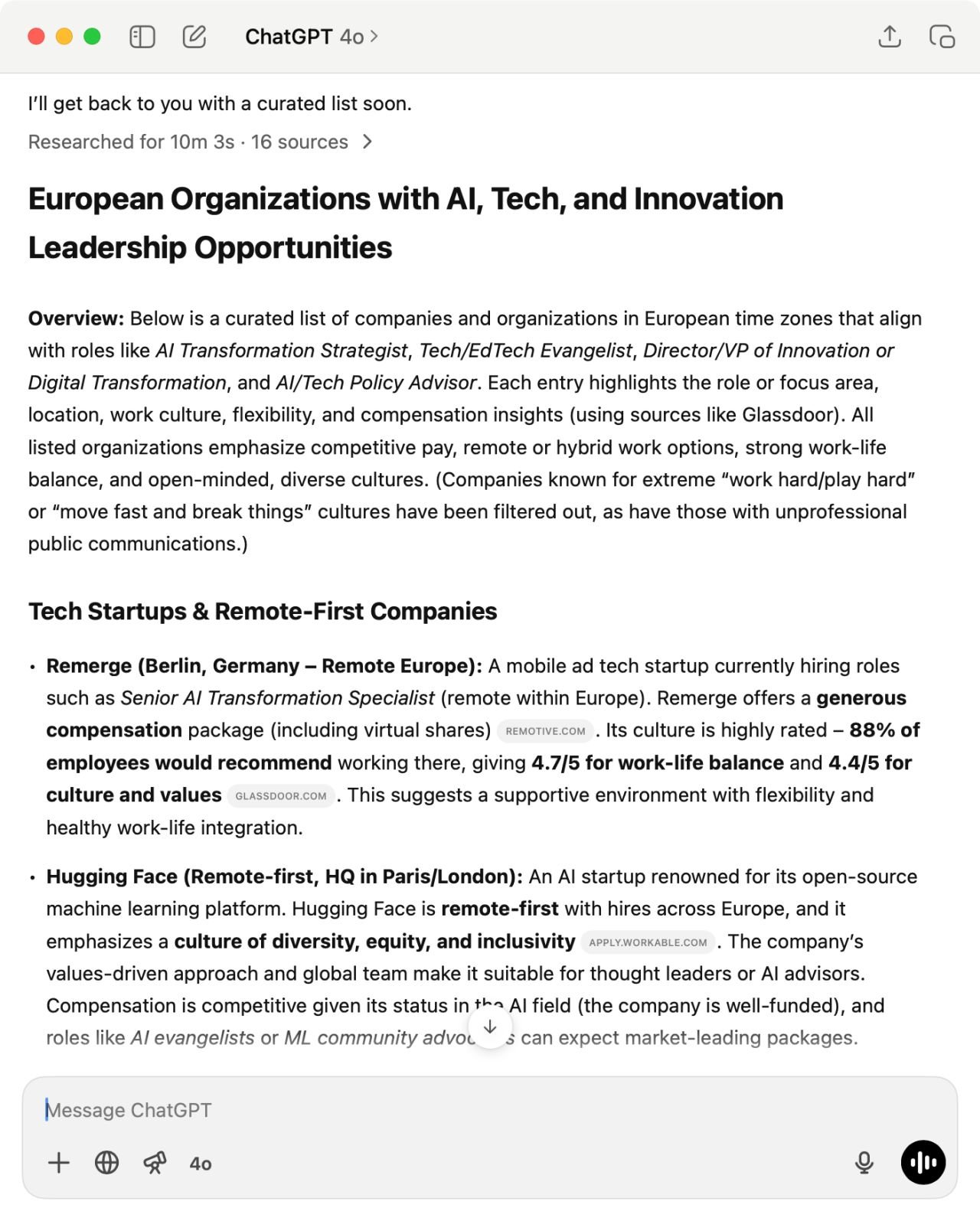How to Use ChatGPT to Find Better Jobs—Before They’re Posted
Most people approach job hunting the same way: open a few tabs, scroll through listings on LinkedIn, and send out a batch of applications. It’s reactive, repetitive, and highly competitive. In the age of AI, it’s also increasingly ineffective.
The reality is: once a job ad goes public, you’re competing with hundreds of nearly identical CVs—many generated by AI tools. Before a human recruiter even sees your application, it may already be filtered out by algorithms.
The better opportunities rarely reach public listings. They’re filled quietly, through networks and proactive outreach—often before the recruitment process even begins.
AI can help you shift from reacting to ads to identifying and targeting the right companies on your own terms. Here’s how.
Step 1: Use ChatGPT to Diagnose Your Career Potential
Upload your CV into ChatGPT and ask it to take the role of a headhunter or experienced career coach. The prompt might be:
“As a senior recruiter and career strategist, analyze this CV and suggest five meaningful directions for further development.”
You’ll get suggestions that may be broad, but they provide a strong starting point for reflection and targeting. This step turns AI into your private advisor, helping you clarify where to look—before you even start the search.
Step 2: Define Non-Negotiables Before You Engage
Candidates often waste time on interviews with companies that don’t align with their basic needs. A strategic job search begins with defining what matters most to you. For example:
Minimum salary expectations
Remote or hybrid work policy
Company culture grounded in respect and equality
Work-life balance
Positive internal reputation (e.g. Glassdoor reviews)
This clarity allows you to filter proactively, avoid poor matches early, and focus your time where it matters.
Step 3: Use ChatGPT Deep Search or Perplexity to Identify Matching Companies
With your priorities and target direction in place, use ChatGPT (with Deep Search enabled) or Perplexity to research companies that fit. The prompt might look like:
“Research companies in [country, region] that align with these criteria [paste your list] and support career growth in [chosen direction]. Include current recruitment activity, company culture, and employee reviews.”
You’ll get a shortlist of relevant companies before they post openings—often companies you wouldn’t have discovered through standard platforms.
This is the inverse of traditional job hunting. Instead of asking “What jobs are out there?”, you ask “Which companies are worth my attention?”
Whatever it is, the way you tell your story online can make all the difference.
A More Strategic Approach to Career Development
This AI-supported process is not about improving your CV. It’s about shifting the model.
From scrolling listings to conducting targeted research.
From reacting to offers to curating opportunities.
From fitting into someone else’s funnel to designing your own path forward.
This method gives candidates more control, better alignment, and fewer wasted conversations.
If you’re leading a team and want your people to use AI strategically—not just in job hunting (!)— but across daily workflows—book an intro call to learn how I can help your company.



